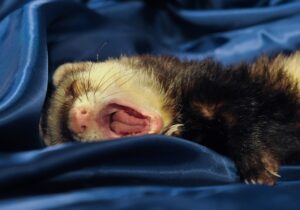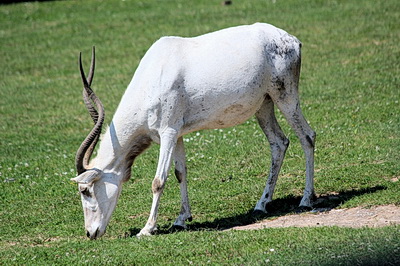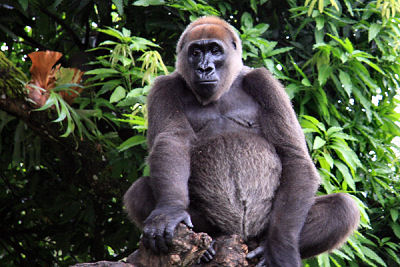
Nature has its way of creating balance on the planet. The presence of plants and animals, along with humans, is one of the ways to maintain this balance. Yet, human existence may be one of the biggest threats to the survival of animals. Human activities are not only leading to loss of habitat but are also causing extensive damage to ecosystems due to climatic change. In all, it means that natural habitats will continue to disappear, and several species of animals will be extinct in the future.
The species that we highlight in this post are some of the rarest creatures on earth. And they are not only rare but are also critically endangered, which means they have a high risk of extinction. Let’s learn more about these species and maybe you can help to save them.
Addax

Addax is part of the antelope family and is on the critically endangered list, with an estimated population of between 30 and 90 individuals in the wild. Also known as white antelope, only a few Addax can be found in the Sahara Desert. While you might never catch a glimpse of them in the wild, several natural conservation programs have managed to save a population of around 2,000 addaxes in captivity. You can also find Addax in many zoos around the world.
One of the most critical reasons for the severe decline in the population of Addax is unregulated hunting. Due to this uncontrolled human activity, the animal that was previously found in North Africa, Egypt, Algeria, Libya, Sudan, and Western Sahara can now not be seen in the wild. In recent years, a few wildlife preserves are taking measures to successfully breed Addax and increase its population so the numbers of Addax out in the wild can increase. While there is still a long way to go, the longer expectancy (of up to 25 years in captivity) is a ray of hope in increasing the endangered species population.
Cross River Gorilla
 Almost all species of gorillas are vulnerable, but the Cross River Gorilla makes the most critically endangered giant ape. The creature was first identified in 1907. However, it remained largely ignored till the end of the last century. In 1987 when researchers began to take notice of the species, the population was already low. Similar to the reason for the extinction of several other species, uncontrolled human activities are to be blamed for the low population of Cross River Gorillas.
Almost all species of gorillas are vulnerable, but the Cross River Gorilla makes the most critically endangered giant ape. The creature was first identified in 1907. However, it remained largely ignored till the end of the last century. In 1987 when researchers began to take notice of the species, the population was already low. Similar to the reason for the extinction of several other species, uncontrolled human activities are to be blamed for the low population of Cross River Gorillas.
Loss of habitat and poaching remains the biggest threat to the giant ape. Moreover, the species prefers to live in very small groups that often do not interact. As a result, they inbreed, which leads to a loss of genetic diversity and a weaker gene pool, which may contribute to its low population.
It is estimated that the current population of Cross River Gorillas in the wild is between 250 and 300. The population primarily resides in the densest forests and hill areas of the Cameroon-Nigeria border at the source of the Cross River. Moreover, there is only one known Cross River Gorilla in captivity. WWF is now working towards designating new protected areas where the primate population may thrive.
Saola
Also known as the Asian Unicorn, saola also makes the list of critically endangered species. The animal was first discovered in 1992 by authorities from the Ministry of Forestry of Vietnam and officials from WWF. The Asian mammal has only been seen out in the wild a few times since its discovery, hence there is limited information about its actual population in the wild. However, according to estimates, the population of saola ranges between 25 and 700.
Another estimate about the population of saola claims that only less than 250 saolas can be found in the wild. However, there is none in captivity. Because of this reason, it is almost impossible to introduce a breeding program or take other measures to increase the population of saola.
Amur Leopard
The giant cat species around the world are declining in number, but the most critically endangered species of giant cats is the Amur Leopard. With a known wild population of fewer than 100 adults, the giant cat resides primarily in the Amur River basin of eastern Russia, with a few spread across the northern part of China.
Similar to Cross River Gorillas, Amur Leopards also lack genetic variation due to inbreeding, resulting in weaker offspring. Hence, they naturally have a lower population. The problem intensified due to uncontrolled human activities. Eventually, the giant cat species fell prey to illegal poaching and loss of habitat.
Fortunately, there are more than 150 leopards in captivity. Moreover, they have a longer life span of more than 20 years in captivity, which gives hope to humanity to increase the population of this critically endangered species of leopards.
Several other animals list critically endangered species, including Javan rhinos, Vaquita, Asian elephants, and snow leopards. Uncontrolled human activities that led to a loss of habitat and poaching remain one of the top reasons these creatures are on the brink of extinction. And while human activities have led to this loss, we still have time to take appropriate measures so some of these rare species can recover shortly. At the end of the day, restoring natural habitats for endangered species is the only way to restore balance on the planet.
